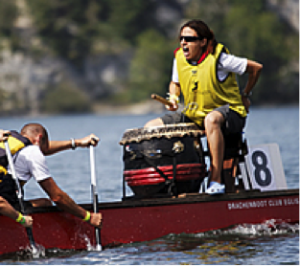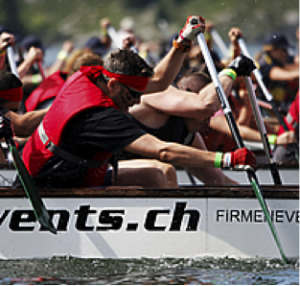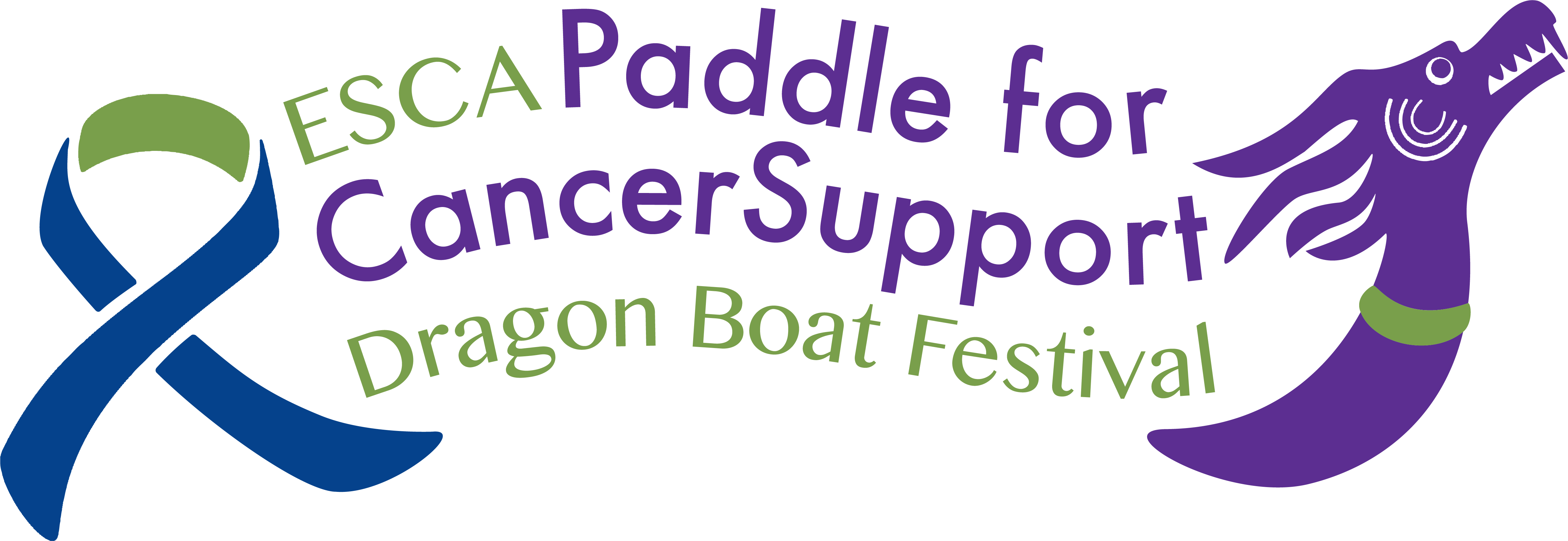Paddling basics
January 21, 2017 5:34 pmThe Makeup of a Dragonboat*
1. PADDLE — The dragon boat equipment paddlers use to move the boat in the water.
2. BLADE — The flat part of the paddle that is placed in the water.
 3 . DRUMMER — The person beating the drum in sync with the strokers. The drummer helps the paddlers unify their stroke and is considered the heartbeat of the boat.
3 . DRUMMER — The person beating the drum in sync with the strokers. The drummer helps the paddlers unify their stroke and is considered the heartbeat of the boat.
4. STEERSPERSON — The person standing in back of boat directing the boat with a long steering oar (yes, this is an oar, not a paddle). The steersperson serves as the rudder of the boat and is a professional from the dragonboat company.
5. The STROKERS — The all-important lead paddlers sitting in row 1. Their essential job is to set the pace for the rest of the boat to follow. They are usually the steadiest, most rhythmic paddlers who tend not to rush.
6. The PACERS a.k.a. “The Show” — These are the front paddlers sitting in rows 2 and 3 who must be strong paddlers in order to help the strokers maintain the pace. Pacers tend to have a longer stroke because they sit higher up in the boat. Their stroke is also a bit slower, because the water is not moving as fast at the front of the boat. In general, the pacers are also the smallest and lightest paddlers.
7. The ENGINE ROOM a.k.a “The POWER” — These are the middle paddlers seated in rows 4, 5 and 6. They are the stronger, heavier paddlers. Because the engine room is in the middle of the boat, these paddlers are closer to the water and can dig deeper into the water. This allows them to take advantage of their power and size to really propel the boat forward.
8. The TERMINATORS a.k.a. “The Rockets” or “The Dough” — These are the back paddlers seated in rows 7 and 8. Having a strong back of the boat can be an advantage especially at the end of a race. They can pull the boat out of the water and give the boat that extra needed boast. Terminators tend to have a shorter stroke and a quick recovery because the water is moving extremely fast by the time it reaches the back of the boat.
9. GUNWALE (or GUNNEL) — the outside edge or the side of the boat that touches the water. In dragon boating, you actually hang out over the gunwale while you are paddling.
10 . RIGHT SIDE of the BOAT — sometimes called starboard.
11. LEFT SIDE of the BOAT — sometimes called port.
12. FRONT of the BOAT — where the drummer and dragon head are located; sometimes called the bow.
13. BACK of the BOAT — where the steersperson stands and the dragon tail is located; sometimes called the stern.
* Courtesy of The University of Toronto, Victoria College Dragon Boat Team
Paddling Basics
 Dragon boating is a full-body workout. By no means are you just sitting up straight and paddling.
Dragon boating is a full-body workout. By no means are you just sitting up straight and paddling.
There are six key parts to the dragon boat stroke. When done properly, the boat flies. When executed improperly, the boat feels sluggish and heavy.
The six components are called: rotation/twist, extension/reach, catch, pull, exit, and recovery.
Rotation or Twist
Plant your feet against the strut in the boat so that you can engage your legs. Engage your core muscles as you twist to turn your chest toward your partner.
As you rotate, your outside hip moves forward and your back turns toward the shore. This twist allows for maximum reach.
Extension or Reach
This position in the stroke is crucial to maximize the length of the stroke. The position of the outside paddling arm is equivalent to pulling a bow and arrow. The outside shoulder should be dropped slightly while extending forward. Your torso bends forward for additional extension. The upper arm should rise up extending over the head. The lower arm is fully extended and is almost locked at the elbow. The paddle should be a few inches above the water before driving it into the water.
Catch
The catch phase is the most critical to the speed of the boat. The catch is the moment the paddle blade first hits the water. The top hand is held over the water. It then drives down on the paddle, while the outside arm is relaxed and fully extended.
Pull
Once the paddle is fully submerged or “buried,” the next part of the stroke is the pull phase. The paddles should be pulled back directly parallel with the boat. The top hand stabilizes the paddle as the bottom arm and back muscles pull back. To use the back muscles effectively, the paddler sits up while pulling and continues to drive the paddle downward with the top hand. Maximum power and endurance will come from using the larger muscles of the back, shoulder, and trunk rather than relying on your arm muscles.
Exit
At the end of the stroke, the paddle should exit the water no further than your hip. Allowing the stroke to go past the hip results in the paddling blade being at an angle that would slow down the boat. The outside arm bends slightly to allow the paddle to clear the water and then it is pushed or snapped forward for the next stroke.
Recovery
This part of the stroke is the rest phase when the muscles are not working as hard. During recovery, the torso starts rotating and leaning forward to setup for another cycle of the stroke.
* Technique developed by the World Champion False Creek Racing Canoe Club, B.C.
Categorised in:
This post was written by Patricia Allen
